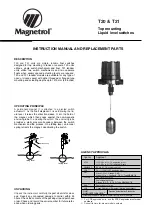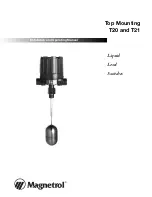
Chapter 4: Web management
114
NS3550-8T-2S Industrial Managed Switch User Manual
Feature
Default Value
Port cost
0
Bridge Priority
32,768
User-changeable STA parameters
The factory default settings for the switch should cover the majority of installations. It is
advisable to keep the default settings as set at the factory unless it is absolutely
necessary. The user changeable parameters in the switch are as follows:
•
Priority
– A priority for the switch can be set from 0 to 65535. 0 is equal to the
highest priority.
•
Hello Time
– The hello time can be from 1 to 10 seconds. This is the interval
between two transmissions of BPDU packets sent by the root bridge to tell all other
switches that it is indeed the root bridge. If you set a hello time for the switch and it
is not the root bridge, the set hello time will be used if and when the switch becomes
the root bridge.
Note:
The hello time cannot be longer than the max. age or a configuration error will
occur.
•
Max. Age
– The max. age can be from 6 to 40 seconds. At the end of the max age,
if a BPDU has still not been received from the root bridge, the switch starts sending
its own BPDU to all other switches for permission to become the root bridge. If the
switch has the lowest bridge identifier, it will become the root bridge.
•
Forward Delay Timer
– The forward delay can be from 4 to 30 seconds. This is the
time any port on the switch spends in the listening state while moving from the
blocking state to the forwarding state.
Note:
Observe the following formulas when setting the above parameters:
Max.
Age _ 2 x (Forward Delay - 1 second)
,
Max. Age _ 2 x (Hello Time + 1 second)
.
•
Port Priority
– A port priority can be from 0 to 240. The lower the number, the
greater the probability the port will be chosen as the root port.
•
Port Cost
– A port cost can be set from 0 to 200000000. The lower the number, the
greater the probability the port will be chosen to forward packets.
Illustration of STP
A simple illustration of three switches connected in a loop is depicted in the following
diagram. In this example, you can anticipate some major network problems if the STP
assistance is not applied.
















































